
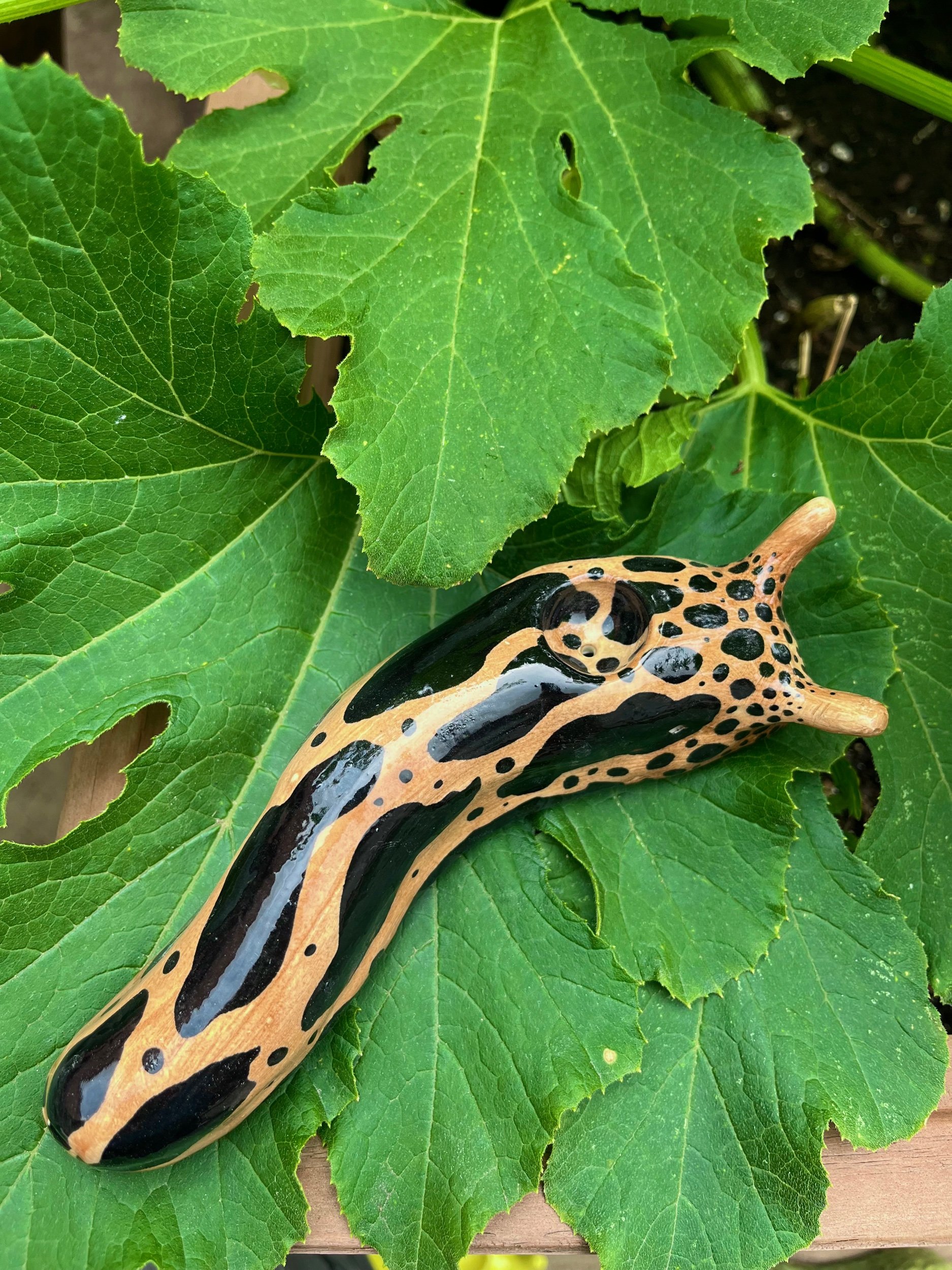
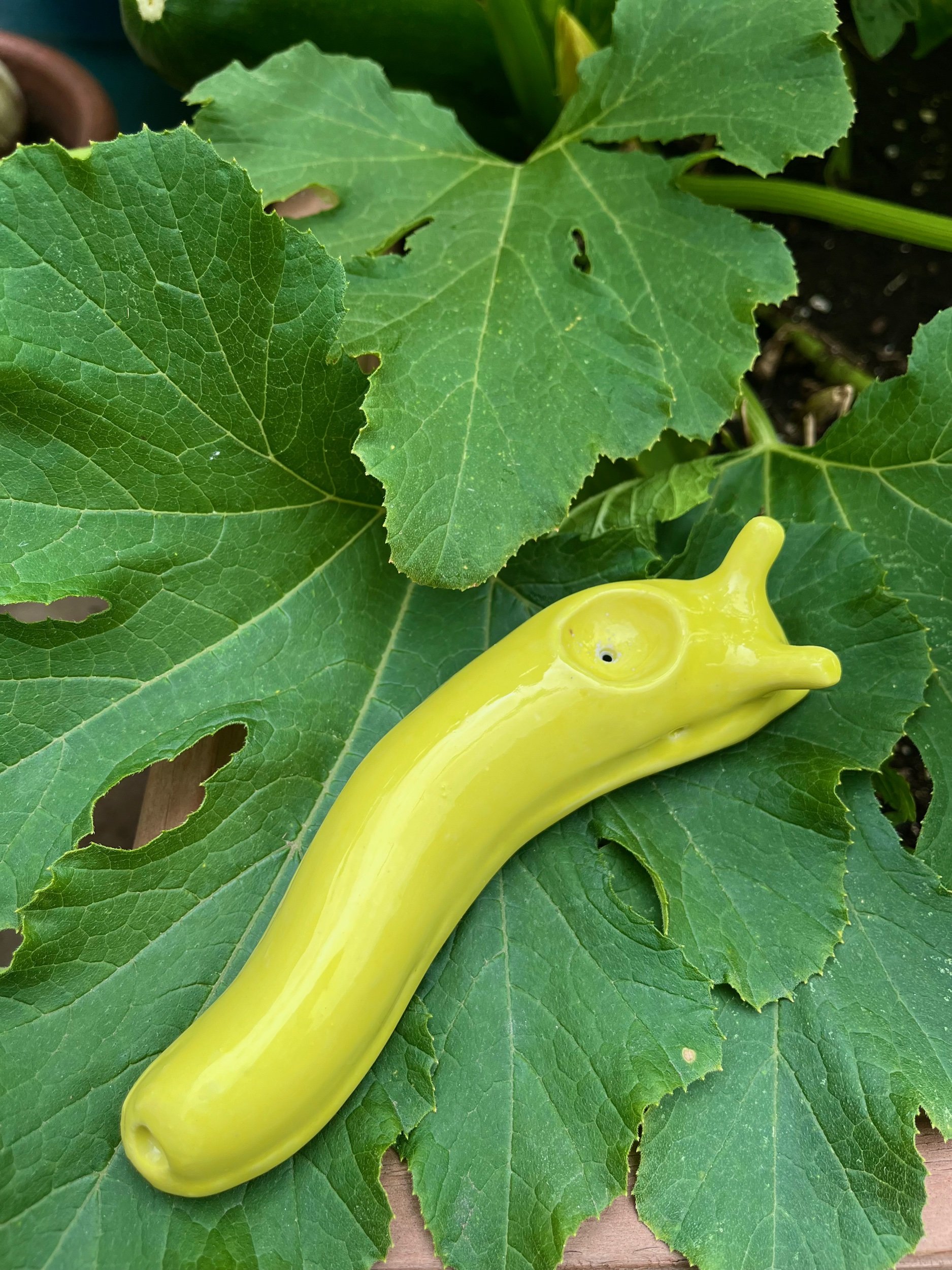
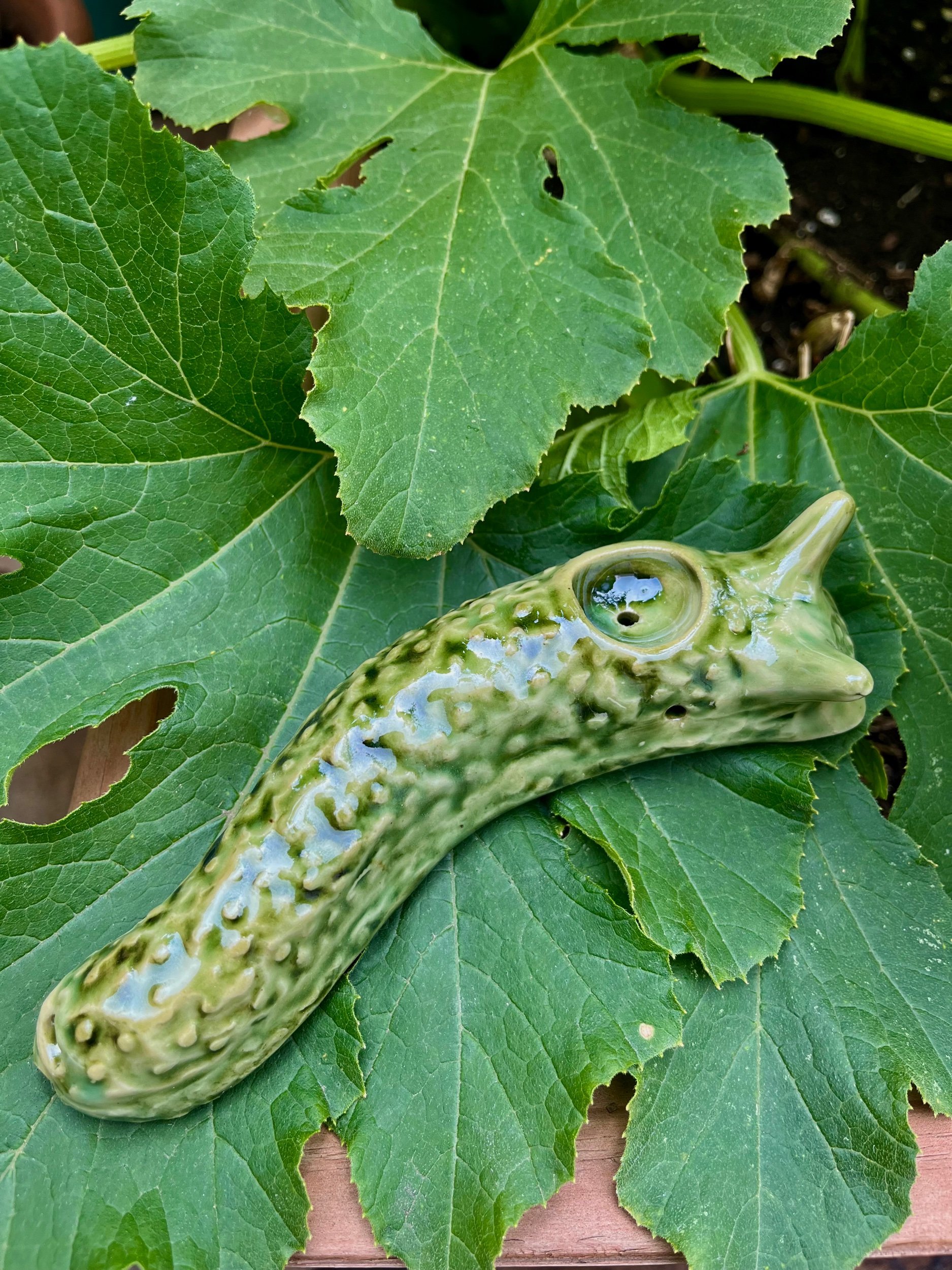
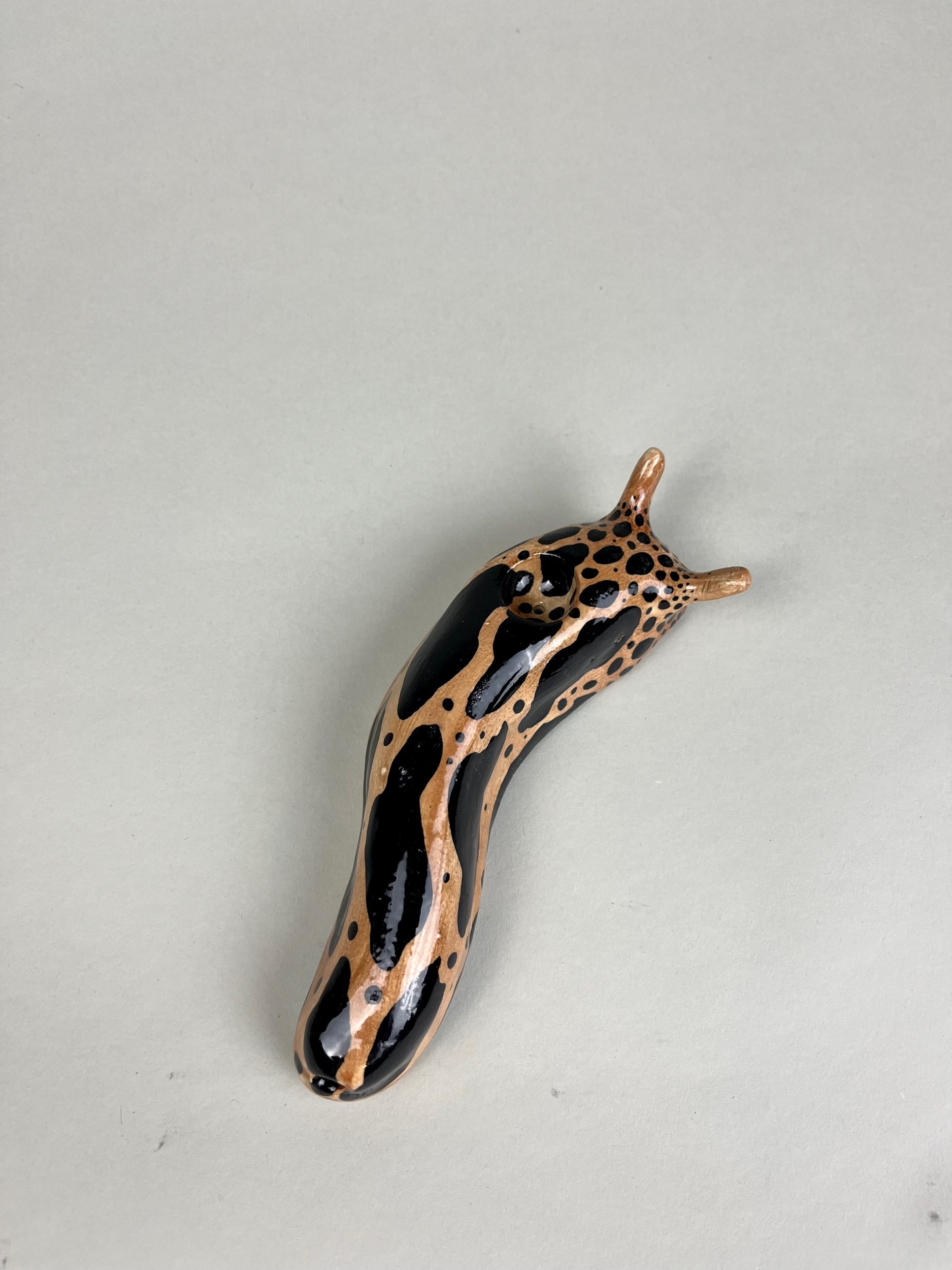

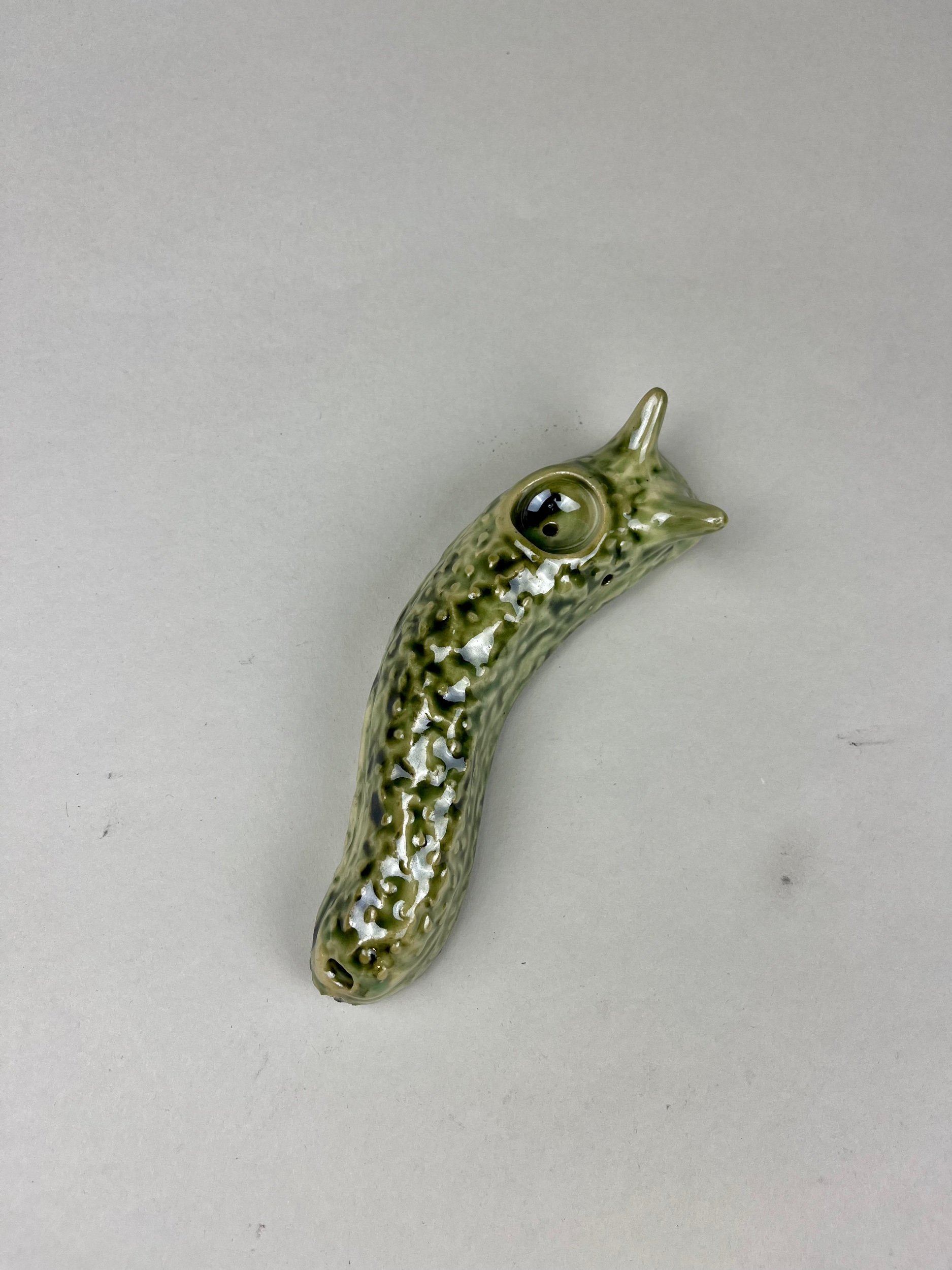

Slug Pipe, Multi Color
These slimy friends make the perfect accent piece for any “gardeners” coffee table. Handbuilt porcelain allows for lightweight use, and safe glazing methods allow for this piece to function as any glass piece would. Please Make sure you click you slug of choice (leopard, Green, Banana) prior to purchasing. Visit Additional Info for cleaning directions.
Please note that shipping is included in your final price!
Slug Pipe, Multi Color
These slimy friends make the perfect accent piece for any “gardeners” coffee table. Handbuilt porcelain allows for lightweight use, and safe glazing methods allow for this piece to function as any glass piece would. Please Make sure you click you slug of choice (leopard, Green, Banana) prior to purchasing. Visit Additional Info for cleaning directions.
Please note that shipping is included in your final price!
CLEANING METHODS:
Rubbing Alcohol & Salt
Our preferred method and the one we recommend for our pipes is rubbing alcohol and salt (Epsom or rock salt both work). Depending on the size of the piece you are cleaning, this can be really easy to mix in a sealing sandwich or freezer bag. If you want to be eco friendly, we suggest a reusable silicone bag or skip the bag and work with a container in the sink (just be careful shaking to make sure it doesn't go everywhere).
Simply pour the alcohol and salt into the bag, add the pipe (or fill the pipe and seal the holes with your fingers), close it up and shake for about 5 minutes give or take till it looks like progress has been made. Take it out and rinse with hot water to confirm. If there is still resin build up repeat and rinse again.
This can be done 2-3 times if needed to bring it back to a clean (almost new) looking finish and stubborn spots inside can benefit from a pipe cleaner soaked with alcohol run through the holes.
If you have really neglected cleaning your ceramic pipe you may also want to soak it for a couple hours in the solution and rinse with hot water before starting this process.
**Make sure you rinse your ceramic pipe with hot water when you are finished to avoid the unfortunate alcohol smell that may linger otherwise. And of course always remember that alcohol is flammable so don't light up until it's rinsed off or fully evaporated.
Vinegar & Rice
If you don't want to use alcohol with your ceramic pipe or simply don't have any handy, vinegar and rice are a good back up option. Follow the instructions above for the alcohol and salt option above. We suggest a white cleaning vinegar and a smaller rice (although any will generally do). The one thing to remember if choosing rice is that it will absorb the liquid (vinegar) so make sure to be quick with this method before the rice expands or just gets soft. Make sure to rinse with hot water when finished.
Boiling Water
This option is very much only for ceramic pipes. While I'm not a glass expert, I do believe its not recommended (I could be wrong though). Ceramic pipes are fired (baked) to a much hotter temperature then glass, a difference of about 700 degrees minimum) which makes it a harder and much more sturdy material, especially with temperature and the stress of boiling water. Ceramic pipes can handle heat, however ceramic is still subject to temperature shocks, so if you choose to use this method we highly recommend filling your pot of water and adding the pipe BEFORE heating.
Having a designated pot just for cleaning your pipe is a good idea (not sure I want to cook in the same pot personally, but to each their own), we suggest visiting a local re-sell store to get a second hand one cheap (that is better on the wallet, you won't feel bad about destroying it and it's also recycling!).
Add water and your pipe to the pot before turning the heat on. Make sure the pipe is fully submerged and that there is enough water that it won't be revealed as the water evaporates during boiling. If you have any spare canning lids you can cover the bottom of the pan with, it can prevent cracks in the glaze surface from being directly on the base of the pot and the direct heat it receives.
Slowly heat up the pot of water until its boiling and reduce the temperature so its a soft boil (will help keep the water from evaporating as much) for about 30 minutes.. Take the pot off the stove and let cool until it is safe to remove the pipe by hand. You could use tongs, but it's not worth the risk of it slipping out and dropping, trust us. Once out, give it a good wipe with a pipe cleaner to make sure any build up inside has been removed and rinse as needed.
White Vinegar & Baking Soda
Yet another natural option for cleaning your ceramic pipe if you don't have rice or alcohol on hand. Baking soda is a great odor absorber and abrasive and reacts with vinegar to aid cleaning.
Fill a larger container (or a bag) with warm water and add a tablespoon of baking soda and one of vinegar and mix gently. Place the pipe inside and let it soak for a few minutes. If in a bag you can shake for a few minutes to help dislodge resin inside the pipe.
Remove the pipe and rinse well with warm or hot water. Use a pipe cleaner to ensure all resin is removed.
Lemon Juice & Boiling Water
This method isn't one we have used (to be fully transparent) but we wanted to add it to the list as it is an option should you be lacking the supplies above but for some strange miracle have lemons or lemon juice. It lacks an abrasive (although you can add rice, salt and possibly baking soda to help I'm sure), and honestly, its just not the safest method as you need to handle it after pouring boiling water on your pipe. It's definitely a last resort kind of option.
Start by soaking your ceramic pipe in the lemon juice (our sources suggest freshly squeezed is best but the bottled kind will work) in a heat shock safe container such as Pyrex. While soaking, boil some water. We suggest working in your sink for the next step, and carefully pour boiling water onto the lemon soaked pipe. Wearing protective attire (so you don't burn yourself, shake the pipe thoroughly, return to the container and wait 5 minutes. Rinse and repeat as needed. And ofcourse a pipe cleaner is your friend to get into all the small areas inside that need a helping hand.
